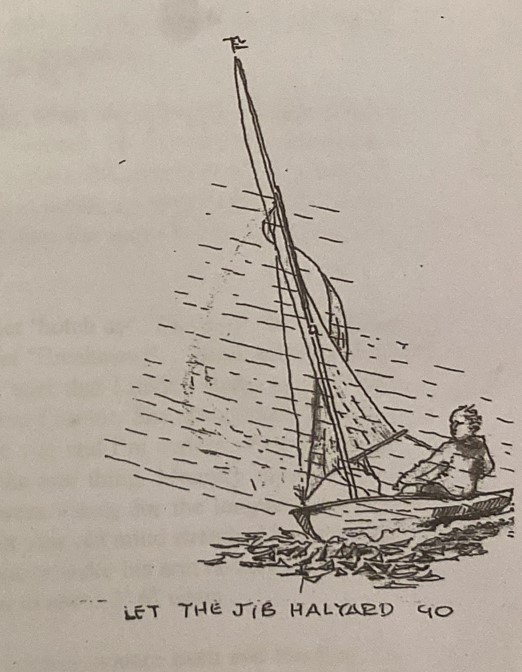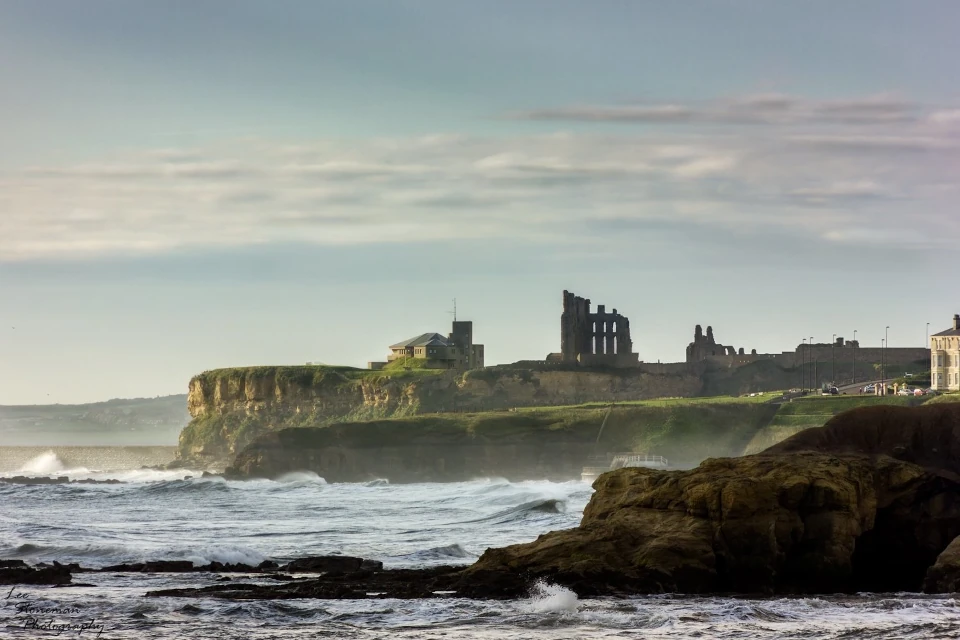4th July 1948 — A Line Squall
By Dalton Linkleter (b. 1928)

It was a Sunday afternoon, mother and father were away, I presume that Platypus was on the beach having its bottom de-weeded because I took Dishcloth for the afternoon race.
The race was a general handycap one, the weather dull inclining to rain, with a fitful wind and a falling tide. Fred Shaw was there with Sea Hawk and Falcon, Skippy and Bustus together with the Firefly 321 and probably some others. The start was from the pier where the starters were stationed, the line being to a buoy or boat mooring in the Haven.
We started up river with the course rounding the Black Middens buoy and crossing the river to the Herd Sand navigational buoy.
Jack Liddel in F321 and Andy Wallace in Bustus, an old National 12, had rounded the buoy. Sea Hawk and Falcon in company with me in Dishcloth crept up river against the ebb making slow progress in the ever lightening air, as the rain increased to a steady downpour. Because we we were beating into the “no wind” the sail was well pulled in and I was crouched in Dishcloth’s little cockpit with water streaming from the sail down my neck and inside my sailing smock (we didn’t wear life jackets in those days) My specs were so wet I had to take them off and place them in the bottom of the cockpit.
Having approached to within 100 yards of the buoy at least twice and floated back on the tide I announced to my neighbour Sea Hawk that I had had enough and was going home.
Putting about, the tide carried me down river to the point where I was turning across the Spanish Battery rocks. The wind was gently increasing, first I was making gentle progress across the rock ends and by the time I could see into the Haven I was in a sitting out position and beating up towards the pier wedge. I was now sitting out fully and glancing into the Haven over my left shoulder saw a line of foam and rain splashes about 2 feet high was rushing across the water. A line squall.
Dishcloth’s halyards came along the deck from the foot of the mast over the cockpit edge, round an upside-down clothes hook and a loop was passed back under the tight halyard locking it in a highwaymans hitch, father’s escape system. I leaned inboard and jerked the tail of the jib halyard which immediately dropped the head of the sail into the sea. As the wind now arrived I repeated the process with the main halyard, the halyard freed and the gaff carried the sail overboard taking the wind load off the boat. The squall then hit in real violence.
Fortunately Dishcloth had a borrowed long metal dagger-plate which was down for the beat, which in itself had me close to head to wind, so she swung the few degrees and headed into this north west gale, that had now levelled into horizontal rain, spray and a hard blow.



